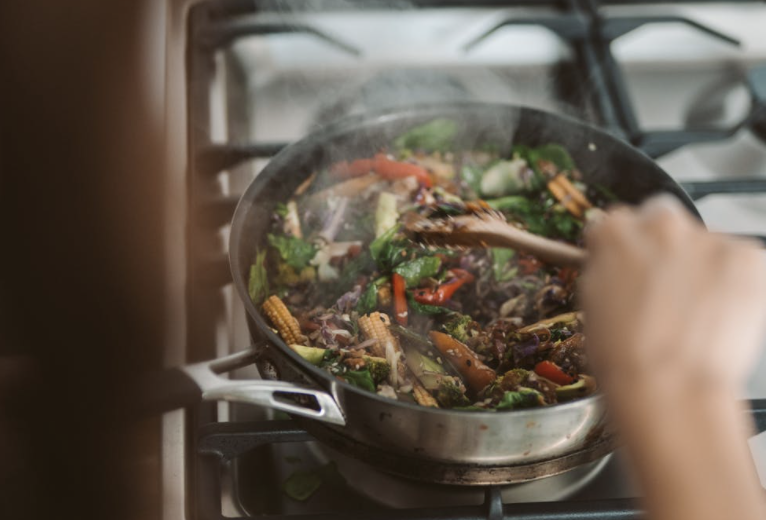
Soggy veggies, under (or somehow over)-cooked, under flavoured meat are the hallmarks of a poorly prepared stirfry. I saw a tweet recently that inspired me to write this blog post. It was something along the lines of, “Your twenties are for making some of the worst stirfry’s of your life.” As much as I agree and can relate, it makes me sad to think that a few bad stirfry’s might discourage one from cooking such a simple, nutritious and versatile meal at home, even well past their twenties. I wanted to offer some tips for how to make sure each element of your next stir fry is restaurant-worthy.
Tip #1 – Rice or noodles
If you’re eating stirfry with rice, remember to put the rice in the cooker ahead of time for a hot, fluffy bed of rice to place the stir fry on immediately once cooked. If you’re making fried rice, however, never use freshly cooked rice; this will guarantee a mushy result. Day-old rice should always be your first choice. There’s no need to waste yesterday’s rice, as the dry grains will soak up the delicious sauce without becoming too soft.
If using noodles, read the package instructions. However the general rule of thumb is hydrated, vacuum-sealed noodles such as udon can be thrown into the pan once your veggies and meat are cooked, along with the stir-fry sauce. Fresh noodles only need to be flash-fried before eating as they are cooked already.
If using dry noodles such as the rice noodles used in Phad Thai, you’ll want to be careful not to overcook them. These noodles typically can either be soaked in cold water for a couple of hours prior to cooking if you’ve got the time, or you can boil some water in a kettle and pour it over the noodles in a bowl, soaking them for about 15 minutes. Once the sauce is poured over them while you cook, they will rehydrate quite quickly so you don’t want them to be too soft before making it into the pan.
Tip #2 – Prep, prep, prep
If you haven’t figured it out yet, stirfry’s are all about timing. Because the cooking process is so quick, you’ll want to have all your veggies and meat prepared before turning the heat on. Be consistent when cutting your veggies to size, so everything cooks evenly. Keep it all bite-sized so it cooks fast too. Add the veggies that take the longest to cook at the beginning, and add the veggies that wilt (like spinach or bok choy) at the end. When it comes to the sauce, mix all the ingredients into one bowl for easy pouring. You don’t want to be stressed out measuring out each liquid for the sauce while you worry that the stirfry is overcooking.
Tip #3 – Marinate!
Unless you’re in a rush, don’t skip the marinade. Marinating the meat (or tofu) for at least 30 minutes in the fridge with some cornstarch, oil, and seasoning makes a big difference for flavour and will keep the protein juicy and you’ll avoid that dreaded dry texture.
Tip #4 – Choose the right oil
As much as we love olive oil, this is one of the few times we recommend putting it aside. Because stirfry’s are cooked at such a high temperature, they require an oil with a higher smoke point. Avocado oil is a great healthy option.
Tip #5 – Give it some space to breathe
Don’t overcrowd the wok. Take the extra time to cook in batches if making a larger portion. A crowded pan will steam rather than stirfry the veggies, and you’ll risk overcooking or undercooking some parts. Cooking the meat first, then putting it aside into a bowl before moving on to the veggies (or vice versa) works well.
Finally, stir it up! Keep the veggies moving as you cook, and do it fast. They’re supposed to be crunchy!
Leave a Comment
You must be logged in to post a comment.



0 Comments